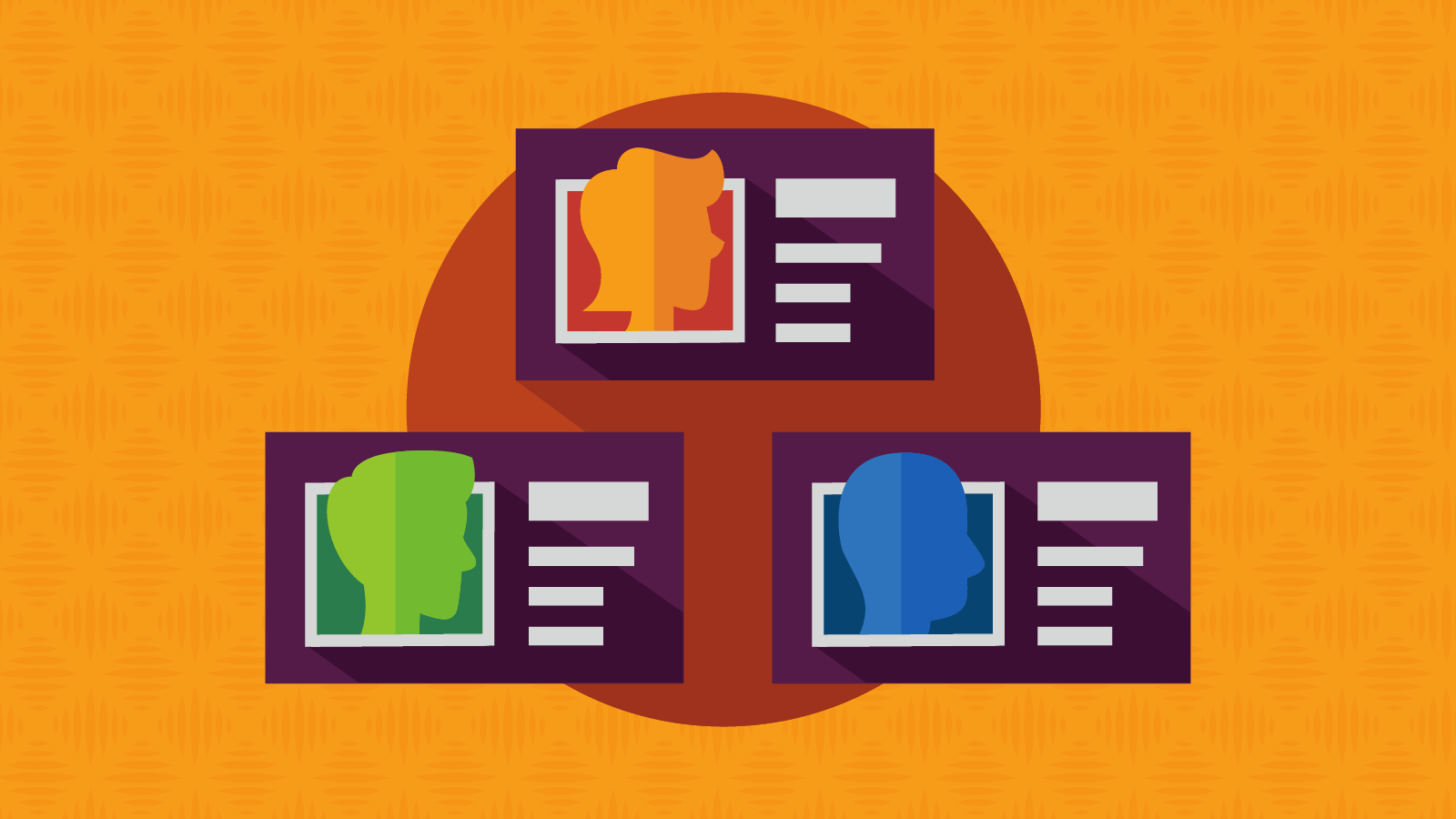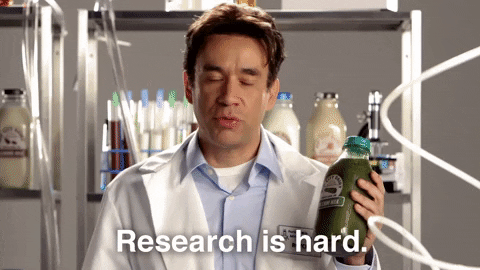Email Marketing
How to Use Buyer Personas in Email Marketing Strategy

Email Marketing

Tech-challenged Todd. Penny-pinching Patty. Aging Arnold. Soccer Mom Sally. If these goofy, alliterative (and sort of insulting) names sound familiar, you’ve probably spent time developing personas. Either that or you have a really strange set of Old Maid cards.
Persona development is a marketing practice that has the potential to help you understand your organization’s ideal customers and formulate marketing plans that resonate with different groups. But how do you use buyer personas if you’re an email marketer?
Let’s break things down and provide some examples of how personas empower email marketing strategy.
Personas represent an imagined snapshot of your company’s ideal customers. It’s not always the typical customer. Rather, buyer personas present pictures of the kinds of individuals or businesses that are the perfect match for what your company provides.
While personas are made-up characters, the details used to create them are based on facts, including hard data, research, and customer feedback.
I’ve developed personas for all sorts of companies in a variety of industries for both employers and agency clients. But the first time I encountered the idea of personas, I was working in local TV news.
Our consultant introduced us to “Linda.” She was a persona he developed for us to represent the ideal news viewer. To be more precise, she was the kind of viewer our advertisers wanted to reach. We all posted a picture of the imaginary Linda in our workstations, so we would keep her top-of-mind as we wrote, edited, and produced the newscasts.
Many different areas of a business will find personas to be a useful tool. That’s especially true if it’s a department that has a direct impact on customers and prospects, such as sales, customer service, public relations, design, and product development.
But how can email marketers use buyer personas?
Buyer personas are an extremely valuable tool for the email team. They’ll help inform every aspect of your strategy, including email design, copywriting, newsletters, content choices, list segmentation, and nurture track development.
List segmentation and automated nurture tracks are probably the most powerful ways to use buyer personas in email marketing. Once your company’s personas are defined, you can start breaking up subscribers into groups that closely match the picture of your ideal customers.
Then, devise nurture tracks that support each of these segments and the buyer personas they represent. Each persona has unique pain points and problems, goals, motivations, personal preferences, and objections. Email campaigns that align with customer journeys serve to nurture your leads and nudge them in the right direction at the right time.
While email marketers can use insights from defined personas to improve strategy, it works the other way as well. Data and insights from the email team can support the process of persona development.
If your marketing team plans to create buyer personas, or if it’s time for a persona refresh, here’s some step-by-step guidance to help you take on the challenge:

Start high level. Your existing customer base, your company’s business goals, and your brand’s position in the market could all impact how you choose the right personas to develop.
You probably have a general idea of the groups of people your company considers ideal customers. Maybe it’s young professionals, retirees, busy parents, or college students. Within those large groups, there will likely be more specific versions that you can break into individual personas.
If it’s retirees you aim to reach, there may be personas with or without grandkids, avid travelers and homebodies, as well as those who are soon-to-retire.
The number of personas you develop depends on the needs of the company and the nuances of your marketing strategy. In general, I’d recommend having at least three buyer personas. I think any more than 10 is going a bit overboard and could cause a loss of focus.
There will be a certain amount of overlap between your personas. If you notice some of them seem very similar, you can always combine and consolidate.

A common mistake in persona development is assuming you already know everything about your ideal customers. Teams sit down in a conference room to brainstorm and scribble on the whiteboard, but it’s all based on opinions and assumptions.
It’s better to combine market research, internal data, and stories from people who actually represent your buyer personas. Interviews with real-life customers will give you some incredibly useful information. You may also find people who fall into the right category but aren’t doing business with you. In fact, surveying people who chose not to purchase from you could offer the most valuable insights of all.
The more real people you take the time to talk with the better. As you do so, you’ll start seeing common threads in these conversations that reveal how your personas think, feel, and act.
Interview employees who interact with your target audience as well. Just keep in mind, certain teams tend to encounter customers at specific points in a customer journey. Sales reps understand what happens just before a purchase decision is made. Marketing has insights into what happens up until that point. Customer service sees where people run into issues after a purchase.
During both customer and employee interviews, have a few key questions you want to ask, but be sure to let the story unfold naturally without leading people in a certain direction. Simply have a conversation and ask good follow-up questions.

While it’s common to see personas using cheesy names with alliteration, (Becky the Blogger, Small Business Steve, Architect Angela, etc.), that’s definitely not a requirement. It could actually hamper your efforts.
UX expert Chris Noessel, wrote about persona development on Medium. He suggests avoiding those kinds of names because they make your buyer personas feel less like real people.
Instead you’re signaling that it’s just a semantic tool, a category, dissociated from the living, breathing people who have to use the app [or whatever product] that you’re trying to wrangle into existence.
You do, however, want persona names to be memorable. Noessel also warns about going too far in the other direction and using names like Bob Smith or John and Jane Doe. That doesn’t feel real either.
At Email on Acid, we have specific first names and job titles for our personas. Although, we tend to use the real-life names of people on our internal email team when we discuss those personas. That does help us think of the personas as real people we can relate to — as opposed to something lame like Email Ernie.
Along with the name, use memorable images to represent your personas. Choosing a realistic photo may be more helpful than an illustrated avatar or a fake-looking stock photo.

Persona profiles usually include a list of key descriptive details. That list could be comprised of age, gender, income, location, relationship status, education, and more. But those are demographic details. What you’ll get even more value from are psychographic details.
Psychographics describe a person’s values, interests, attitudes, fears, and lifestyle. These things are the details that explain what’s going on inside a persona’s head, which is exactly what you want.
Be careful to avoid adding too many fluffy details to your buyer personas. Try to make every aspect point back to the customer journey and how that part of the persona impacts their path to purchase. It may be important to know your persona has an MBA, but not that she got it from Carnegie Mellon University where she was a member of the Kappa Phi sorority.
Other details may seem superfluous, but they could provide a spark of creativity. For example, a persona who loves romantic comedies might respond to certain kinds of copywriting and cultural references. You can use that in email marketing strategy, social media, digital ads, and more.

Ultimately, buyer personas need more than a bullet list of key details. It can be very useful to write narratives that tell your personas’ stories.
Use the true stories you collected from actual customers and prospects during persona research. Identify important details and touchpoints along the customer journey to weave a tale of what prompts this persona to look for solutions your company provides.
Another section I’d recommend is “Key Questions.” What is each of your personas asking as they research and evaluate their options? Brafton provides some additional ideas for creating buyer persona templates.
Besides text, look for visuals that help you use buyer personas to their fullest. That could include charts and graphs from market research, images that reflect persona preferences, or comprehensive customer journey maps.

Even when you’re selling to businesses, it is still people making purchase decisions.
The people making those decisions will be balancing their own personal emotions with the needs of the company. That means you still need to think about psychographics. According to Think with Google, B2B customers are even more emotionally connected to vendors and partners than B2C customers.
Emotions run high because B2B purchases are often high-risk. Email campaigns can help address those risks and objections while building trust. But building trust with who?
The biggest difference between B2B and B2C customer journeys is that, with B2B purchases, more than one employee is involved in the decision-making process. There will be various reviews, approvals, and opinions from across the organization.
I once worked on persona development for an IT solutions provider that offered services such as cloud migration, disaster recovery, and cybersecurity to enterprise companies. We had to consider buyer personas on a few different organizational levels.
First, there were what I call the “boots-on-the-ground personas.” That included systems engineers, cybersecurity specialists, and cloud engineers. These personas would likely present a need or problem to their bosses, but they could also have concerns about outsourced IT threatening their job security.
Second, there were IT managers and directors. They may research solutions or pass that work along to others on their team for initial recommendations. Directors and managers care about finding solutions that make their teams more efficient and effective, yet they also have to stay within budget. In the end, it may be their decision. But first, they’ll need to persuade the people at the top.
C-suite personas also played a role in this process. The Chief Information Officer (CIO), Chief Technology Officer (CTO), and/or Chief Security Officer (CSO) could certainly get involved in selecting new IT partners. Plus, the Chief Financial Officer (CFO) and even the CEO may influence the final decision.
Email marketers can set up automated nurture tracks designed for people with different roles and job titles. The content in these campaigns should reflect what the persona is trying to accomplish and the questions they need to be answered.
Using the IT company as an example, the systems engineer could be the one working with them the closest. He’ll want technical information as he researches potential solutions. He’ll also appreciate a little reassurance that his job isn’t in jeopardy. End-user personas want to know you understand their challenges and that you can help them be the hero.
IT directors will find value in email campaigns that help them evaluate solutions against competitors. The closer we get to making a purchase decision, the more cost becomes a factor. So, use email to highlight your unique selling point (USP) from the start. At this level, trust is important. If a B2B partner is a huge letdown, that means this persona’s job and reputation could be at risk.
Emailing testimonials, success stories, and case studies to decision-making personas is a great idea. It shows them that businesses like theirs work with companies like yours.
While members of the C-suite may never end up as subscribers, email marketers could indirectly influence these personas by delivering proof points and selling points that others can use to make their case to executives.
In addition to what you put in your nurture tracks, carefully consider who the emails come from (sender name). Friendly froms make automated campaigns more personable. But don’t introduce the sales team too early. Make relatable people, subject matter experts, and thought leaders the faces of your B2B nurture track content.
Check out our list of B2B email automation ideas to help you build your strategy!

B2C personas are more likely to be defined by demographics. For example, many companies divide consumers by age or generation (Millennials, Gen-X, and Boomers). Just don’t’ forget, with B2C personas it’s all about lifestyle.
Family and relationship status will tell you a lot about a consumer’s lifestyle. Aspects such as where they live, their income, and education may help too. However, if you can drill down to a consumer’s beliefs and aspirations, that’s when you’ll hit persona gold.
What makes them tick? Do they care about the environment? Do they want to be rich and successful? Will emails highlighting cause marketing impact their opinion of your brand?
Email marketers must use all the consumer behavior data they can get their hands on to gather intelligence that informs list segmentation for more effective email strategies.
I used to work for an eCommerce company that sold dietary supplements and natural health products. The personas for a brand like this can be broken down by the interests of different consumers and what they hope to get from the products.
Here are some examples:
Each one of these consumer personas cares about different things. They have specific fears, aspirations, and motivations. Documenting that helps the marketing team and the entire company serve customers more effectively.
Personas for this brand could also be separated by specific health concerns: cardiovascular, digestive, immune system strength, etc. Each of these potential personas will have a story that describes their ongoing customer journey.
Nurture tracks are less common in B2C email marketing, but it doesn’t mean one automation fits all. B2C personas inform email marketers on how to segment their lists. This makes your emails much more effective because they’ll be more targeted and relevant.
If you’re batch-and-blasting promotional emails to a general list, you’re missing opportunities. In the examples above, the single guy focused on building muscle mass and the seniors looking to relieve joint pain don’t care about multivitamin gummies for kids. So, why send them an email about that kind of product?
B2C personas inform more than promotions. Another way to use buyer personas with email marketing is through your newsletter strategy. Why have just one newsletter when you could curate content for different personas?
Check out our list of automated B2C email campaigns for more ideas to support your strategy!
Once your company defines its buyer personas, determining how to use them typically requires another marketing imperative: customer journey mapping. Personas and customer journeys are companion tools that work better together.
Adele Revella literally wrote the book on buyer personas. In the interview below, she speaks with Verne Harnish about the importance of understanding how, when, and why personas make decisions. Those answers are the foundation of a customer journey map.